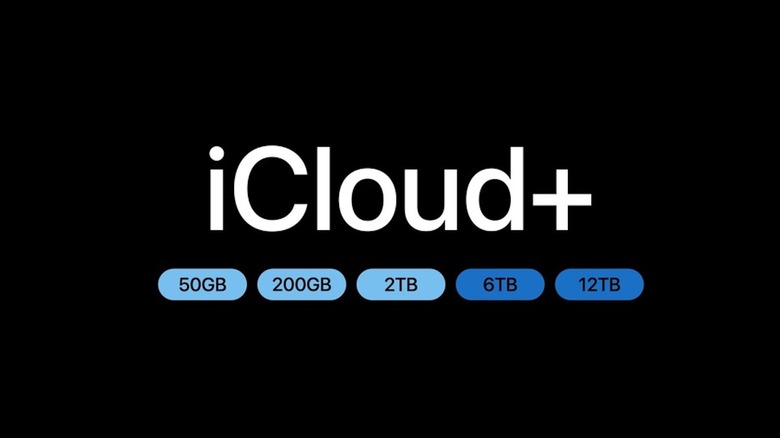Apple iCloud+ Is Getting Up To 12TB Of Storage
Apple's iCloud service has several uses and features, though how much you get out of it is primarily driven by how much storage space you need. Up to now, users have had four options when it comes to their iCloud capacity: 5GB, 50GB, 200GB, and 2TB — but a blink-and-you'll-miss-it announcement during the September 2023 Apple Event revealed plans to expand the services options well beyond that 2TB maximum.
Soon, iCloud+ users (i.e. those who subscribe and pay for more storage than the initial 5GB-for-free regular plan) will have the choice to expand to either 6TB or 12TB of cloud storage. Both new plans also retain the same iCloud+ features as the lower tiers.
You'll still have access to perks like custom iCloud email addresses and the privacy-focused Hide My Email, as well as much more storage space for photos, videos, and other files. The expanded tiers can also make use of Family Sharing, meaning everyone on your shared plan will have a larger pool of available space to store their digital media.
Getting more out of iCloud
The most basic (and free) tier of iCloud provides 5GB of cloud storage and nothing else — no other perks or premium features. All iCloud+ plans — which do require a monthly payment — offer increased storage, iCloud Private Relay that boasts increased privacy when browsing in Safari, the previously-mentioned Hide My Email, custom iCloud email domains, and HomeKit Secure Video support for connecting security cameras to your Home app.
Residents of the United States can currently pay $0.99 per month for 50GB of storage and support for one camera on HomeKit Secure Video, $2.99 per month for 200GB and up to five cameras, or $9.99 per month for 2TB and an unlimited number of cameras. As for the new iCloud plans, you can expect to pay $29.99 per month for the 6TB plan, and $59.99 per month for 12TB — with both options maintaining the 2TB plan's unlimited HomeKit Secure Video camera connections.
Each of the new iCloud+ plans will be available for new and existing users in the U.S. starting on Monday, September 18, 2023.

